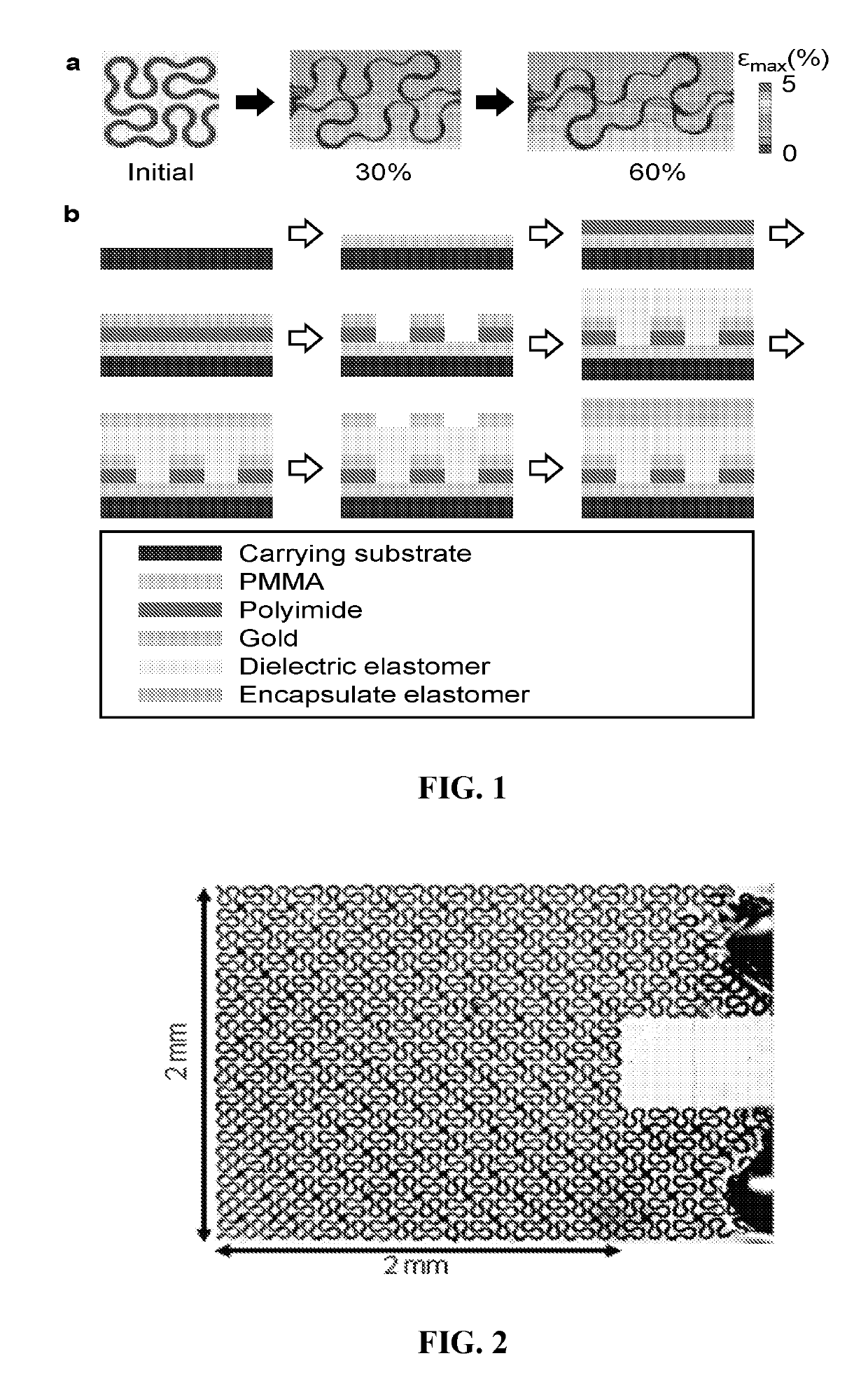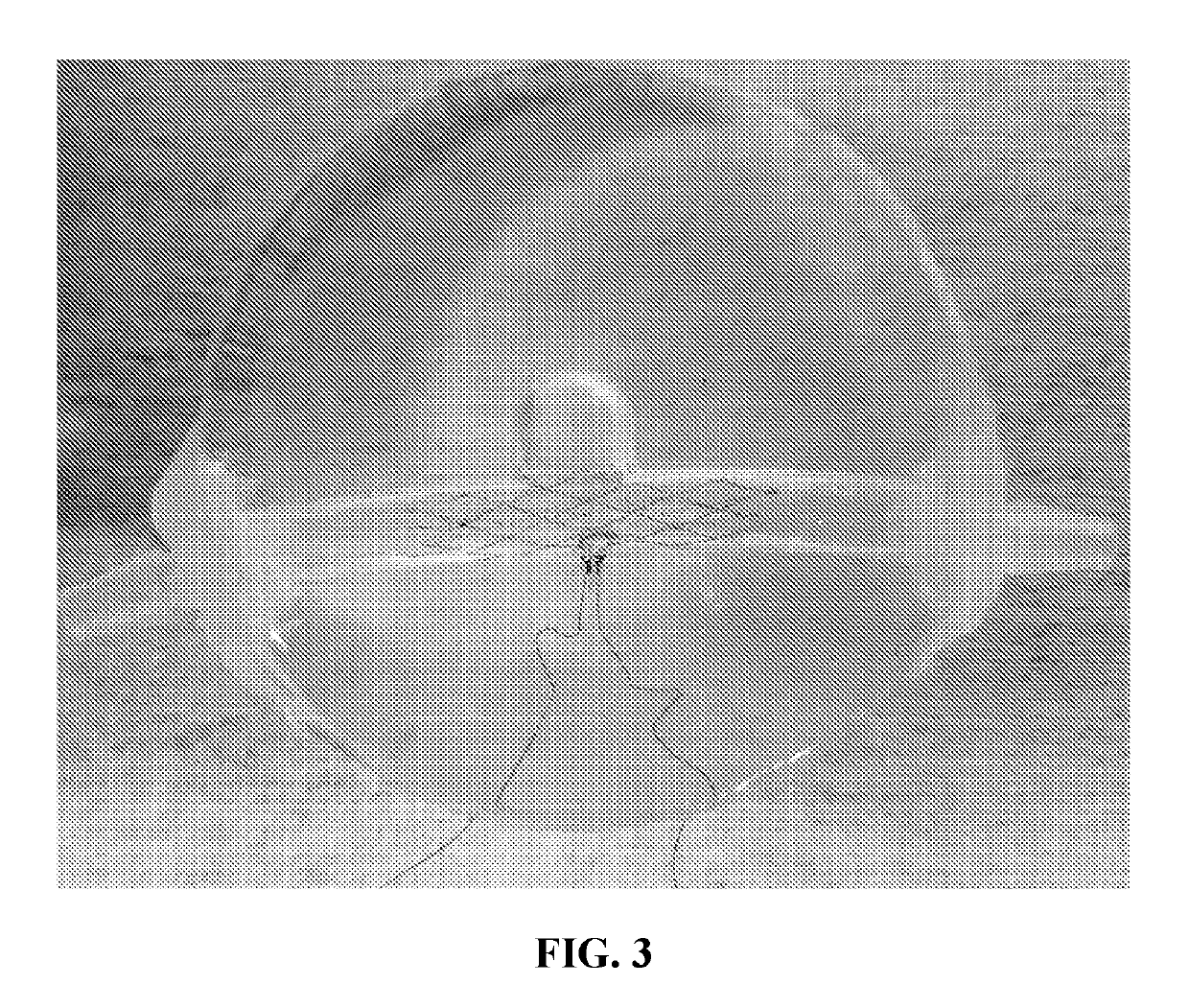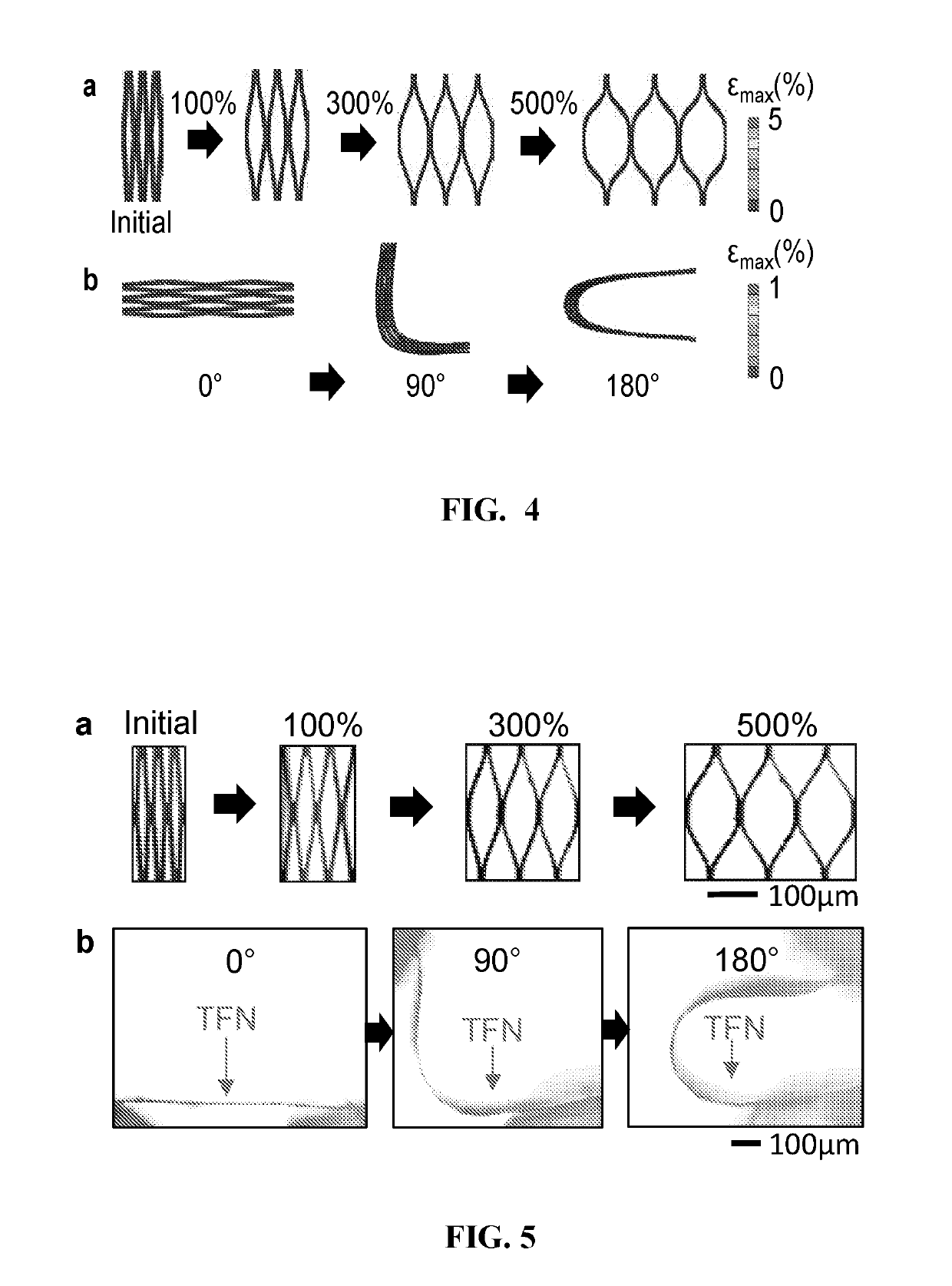Novel ultra-low profile wireless flow sensors to monitor hemodynamic alterations in the vascular system
a technology of ultra-low-profile wireless and flow sensors, applied in the field of ultra-low-profile wireless microflow sensors, can solve the problems of permanent nerve damage, stroke, death, etc., and achieve the effect of improving cure rates and improving hemodynamic stability
- Summary
- Abstract
- Description
- Claims
- Application Information
AI Technical Summary
Benefits of technology
Problems solved by technology
Method used
Image
Examples
examples
I. TFN Flow Diverter
[0063]A hyper-elastic TFN was fabricated using sputter deposition and conventional microfabrication. After the microfabrication, the surface of the TFN structure was treated by using a hydrogen peroxide to make the surface superhydrophilic, which provided hemocompatibility for in vitro and in vivo testing. Through the finite element analysis (FEA), there was determined the hyper-elasticity of the TFN stent and the equivalent mechanical testing. FIG. 4 shows the FEA results of the TFN modeling in tensile strains and bending. The microstructured TFN was found to accommodate stretchability up to 500% in the radial direction (see FIG. 4, view (a)) and an extreme bendability upon 180° with negligible effect to the structure (see FIG. 4, view (b)). To validate the structural safety of the TFN, estimated by the FEA study, a series of experimental validations were conducted. The mechanical testing of the TFN was assessed using a home-made mechanical stretcher, which cons...
PUM
 Login to View More
Login to View More Abstract
Description
Claims
Application Information
 Login to View More
Login to View More - R&D
- Intellectual Property
- Life Sciences
- Materials
- Tech Scout
- Unparalleled Data Quality
- Higher Quality Content
- 60% Fewer Hallucinations
Browse by: Latest US Patents, China's latest patents, Technical Efficacy Thesaurus, Application Domain, Technology Topic, Popular Technical Reports.
© 2025 PatSnap. All rights reserved.Legal|Privacy policy|Modern Slavery Act Transparency Statement|Sitemap|About US| Contact US: help@patsnap.com



